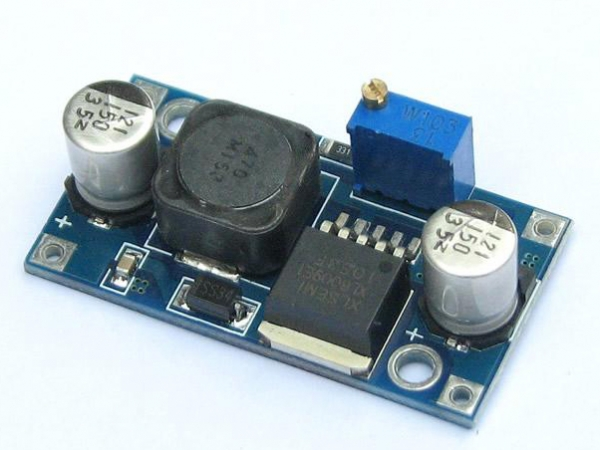
When designing a switching power supply or motor drive circuit using encapsulated MOSFETs, most people consider the on-resistance of the MOS, the maximum voltage, etc., the maximum current, etc., and there are many who consider only these factors. Such circuits may work, but they are not excellent and are not allowed as formal product designs.
The following is a little summary of the basics of MOSFET and MOSFET driver circuits, which I refer to a number of sources, not all original. Including the introduction of MOSFETs, characteristics, drive and application circuits. Packaging MOSFET types and junction MOSFET is a FET (another JFET), can be manufactured into enhanced or depletion type, P-channel or N-channel a total of four types, but the actual application of only enhanced N-channel MOSFET and enhanced P-channel MOSFET, so usually referred to as NMOS, or PMOS refers to these two kinds.
As for why not use depletion type MOSFETs, it is not recommended to get to the bottom of it. For these two types of enhancement MOSFETs, NMOS is more commonly used because of its low on-resistance and ease of fabrication. So switching power supply and motor drive applications, generally use NMOS. the following introduction, but also more NMOS-based.
MOSFETs have parasitic capacitance between the three pins, which is not needed, but due to manufacturing process limitations. The existence of parasitic capacitance in the design or selection of the drive circuit to be some trouble, but there is no way to avoid, and then described in detail. As you can see on the MOSFET schematic, there is a parasitic diode between the drain and the source.
This is called the body diode and is important in driving inductive loads such as motors. By the way, the body diode is only present in individual MOSFETs and is usually not present inside the integrated circuit chip.MOSFET ON CharacteristicsOn means acting as a switch, which is equivalent to a switch closure.
NMOS characteristics, Vgs greater than a certain value will conduct, suitable for use in the case when the source is grounded (low-end drive), as long as the gate voltage of 4V or 10V. PMOS characteristics, Vgs less than a certain value will conduct, suitable for use in the case when the source is connected to VCC (high-end drive). However, although PMOS can be easily used as a high end driver, NMOS is usually used in high end drivers due to the large on-resistance, high price, and few replacement types.
Packaging MOSFET switching tube loss, whether it is NMOS or PMOS, after conduction there is on-resistance exists, so that the current will consume energy in this resistance, this part of the energy consumed is called conduction loss. Selecting a MOSFET with a small on-resistance will reduce the conduction loss. Nowadays, the on-resistance of small power MOSFET is generally around tens of milliohms, and a few milliohms are also available.MOS must not be completed in an instant when it conducts and cuts off.The voltage on both sides of the MOS has a process of decreasing, and the current flowing through it has a process of increasing.During this time, the loss of the MOSFET is the product of the voltage and the current, which is called the switching loss. Usually the switching loss is much larger than the conduction loss, and the faster the switching frequency, the larger the loss. The product of voltage and current at the instant of conduction is very large, resulting in large losses.
Shortening the switching time reduces the loss at each conduction; reducing the switching frequency reduces the number of switches per unit time. Both of these approaches can reduce the switching losses. The product of voltage and current at the instant of conduction is large, and the resulting loss is also large. Shortening the switching time can reduce the loss at each conduction; reducing the switching frequency can reduce the number of switches per unit time. Both of these approaches can reduce the switching losses. Driving Compared to bipolar transistors, it is generally believed that no current is required to turn on a packaged MOSFET, as long as the GS voltage is above a certain value. This is easy to do, however, we also need speed. The structure of the encapsulated MOSFET can be seen in the presence of parasitic capacitance between GS, GD, and the driving of the MOSFET is, in fact, the charging and discharging of the capacitance. Charging the capacitor requires a current, because charging the capacitor instantly can be seen as a short circuit, so the instantaneous current will be larger. The first thing to note when selecting/designing a MOSFET driver is the size of the instantaneous short-circuit current that can be provided.
The second thing to note is that, generally used in high-end drive NMOS, the on-time gate voltage needs to be greater than the source voltage. High-end drive MOSFET conduction source voltage and drain voltage (VCC) the same, so the gate voltage than the VCC 4 V or 10 V. If in the same system, to get a larger voltage than the VCC, we have to specialize in boosting circuits. Many motor drivers have integrated charge pumps, it is important to note that you should choose the appropriate external capacitance, in order to get enough short-circuit current to drive the MOSFET. 4V or 10V is commonly used in the on-state voltage of the MOSFET, of course, the design needs to have a certain margin. The higher the voltage, the faster the on-state speed and the lower the on-state resistance. Nowadays, there are MOSFETs with smaller on-state voltage used in different fields, but in 12V automotive electronic systems, generally 4V on-state is enough.MOSFET drive circuit and its loss.
























